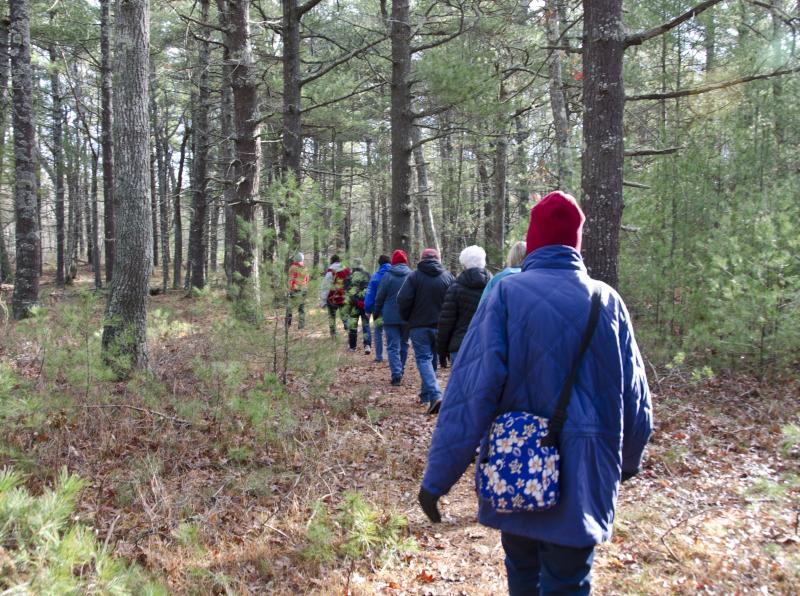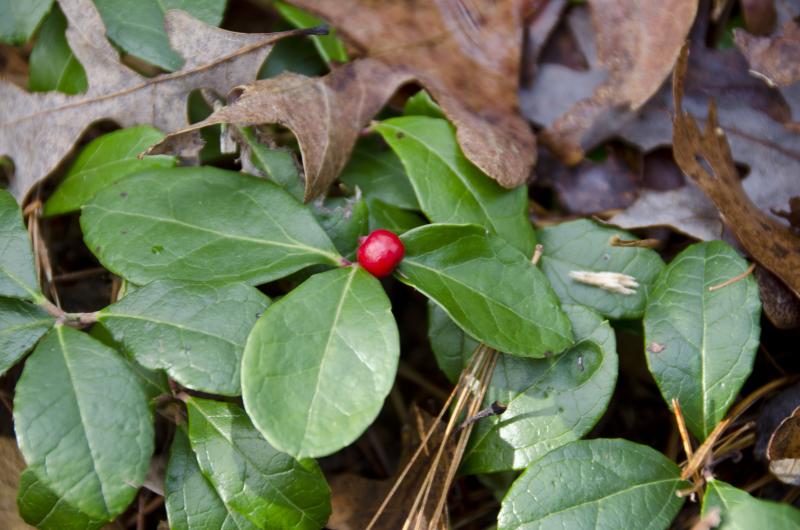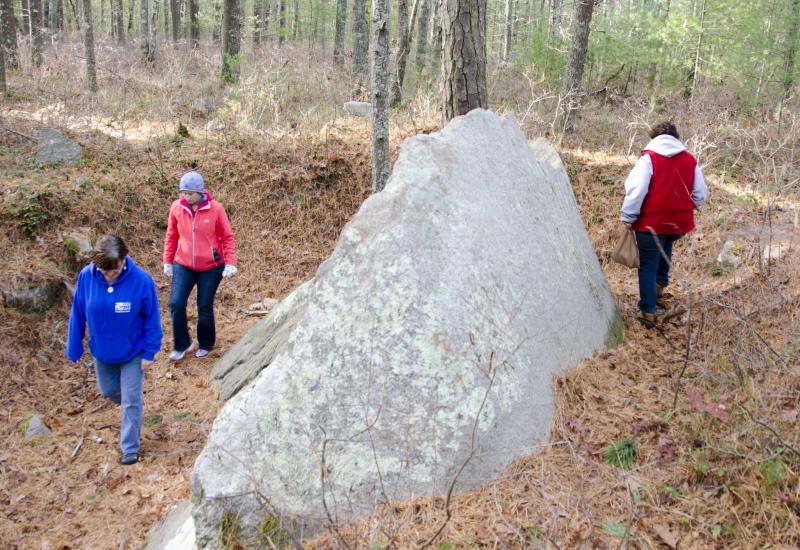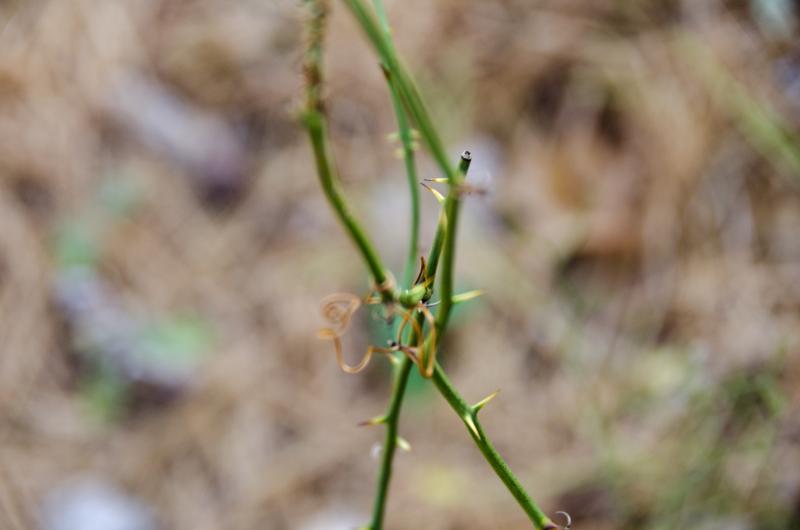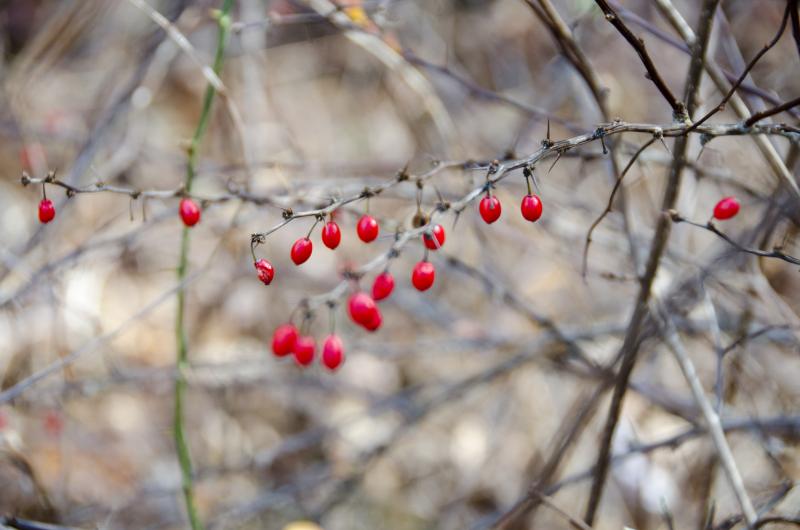Berries and more to be found at Great Neck Wildlife Sanctuary
Local residents took a walk under the "cathedral of pines" at Great Neck Wildlife Sanctuary on Saturday morning with an eye to the ground.
Led by Gina Purtell, sanctuary director for Mass Audubon's South Coast sanctuaries, the group was on the lookout for berries and indicators of the property's agricultural past.
"It's the landscape features that tell a story," said Purtell.
The group immediately came upon a plethora of winterberries, red berries that grow low to the ground and have a minty flavor.
Also not far into the walk, the group found high and low bush blueberry plants. Although the berries were long gone, Purtell said the plant's stems remain green as it photosynthesizes throughout the winter, providing nutrients for deer and rabbits.
There were a few other berries still to be found, particularly the non-native Japanese barberry with its teardrop shaped fruit, a favorite of birds and bees.
Such foreign plants are often brought in because of their beautiful foliage. Some can become invasive, said Purtell said.
"They can be well behaved for decades, [but] eventually can balloon into invasive," she said.
Both imported and native plants can reflect shifting habitats, weather patterns and life cycles in the forest. Purtell pointed to the pesky green brier, a vine that has the unusual quality of thorns and tendrils that can even take down a tree.
While the West has forest fires, "the Northeast has very few agents of change," Purtell explained.
The presence of the thorny vine in the forest means trees have gotten old, fallen down and left patches of light for the plant to grow.
Along the way, the group also came upon rock walls and other indicators of the agricultural activity on the land long ago.
Oak trees near a rock wall on the Old Pasture Loop trail were a possible indicator that livestock not crops were farmed in one area. Purtell said oak trees favor the rich soil that would have been left behind by animals.
"It's another little story from the plants," she said.
For many on the walk, Saturday was their first opportunity to learn about the Great Neck property.
"I didn't know this was here, that's why I came," said Wareham resident Neil Cannon.
Cannon said he had visited other trails in the area and was pleased to have discovered the easy terrain at Great Neck.
"I flat. I like it," he said.
Purtell said Mass Audubon has hosted walks for several years on its properties.
"We've continued it because it's great to maintain the connection with the community," she said.
Purtell said Great Neck is a fascinating property to explore.
"It's a distinct forest and provides a niche habitat," she said.



